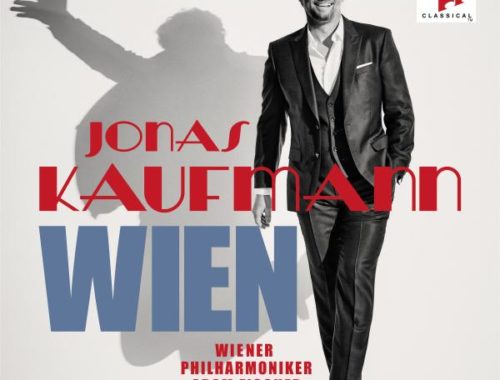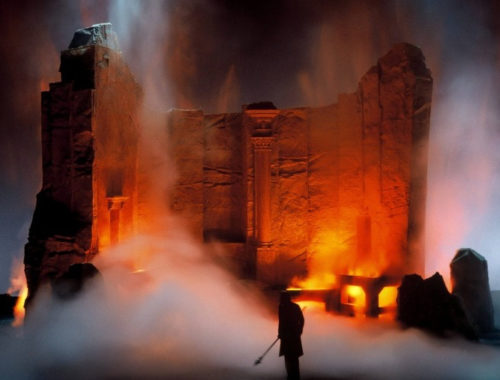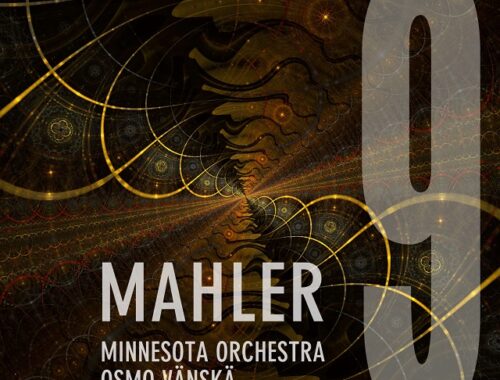Prom 69: Leipzig Gewandhaus Orchestra, Chailly – Review ****
A grim logic pervaded the Leipzig Gewandhaus Orchestra’s second Prom. Messiaen’s Et expecto resurrectionem mortuorum effectively begins where Mahler’s 6th Symphony ends – from the lowest of the lowest depths. Two bass tubas sound the death knell from whence Mahler’s threnody of trombones had offered the last rites. But to precede the turmoil of Mahler’s darkest hour with Messiaen’s blinding promise of resurrection, now that made for an extraordinarily potent brew.
Et expecto resurrectionem mortuorum is one of 20th century music’s boldest sonorities – a great multitude of wind instruments pitted against mighty resonances of gongs and tam-tams and the regimented rattle of cow-bells. There are times when the piece quite literally chimes with Mahler’s cosmic vision of mortality, its great chordal declamations (extraordinary in their blend of wind and brass and their awareness of the instruments’ natural harmonics) topped by a wall of trumpets that on this evening would ultimately give vent to Mahler’s despair. Riccardo Chailly’s Leipzigers made it a monument of marble rather than granite and the bird-like plaints from solo flute, oboe, and clarinet in the second movement were possessed of a mesmeric beauty. It was a performance that seemed to search out its own spaces and it was a pity that Chailly’s great sensitivity in allowing time for meditation between movements was met with a volley of unstifled coughing from the less sensitive among us.
Mahler’s 6th Symphony was a performance which writ large Chailly’s astonishing grasp of thematic and harmonic content – there was a good reason for everything, nothing escaped his finely tuned ears, and all of it was marked by a boundless and profound musicality. The trenchancy of marching rhythm throughout the opening movement (occasionally wanting in an edgier sound than the Leipzig Gewandhaus could give us) was in blissful contrast to the airborne quality of the second subject – “Alma’s theme” – where Chailly’s subtle deployment of rubato gave it a joyous spontaneity. Xylophone seemed to symbolise the rattling of old bones, distant cowbells (magically far away in the gallery, or rather next valley) an uneasy peace. And that shattering appoggiatura at the close of the movement has never been more telling.
But then Chailly opted for the revision (later, I am persuaded, reversed by the composer) of placing the Andante rather than the Scherzo second and the pity was that the latter option would have made for an absolutely shocking collapse from the hard-fought A major at the close of the first movement back into the minor with the remorseless march rhythm now grotesquely disabled with a limp in its gait. I concur with Chailly on just about everything in music, and especially Mahler, except this. I really believe that Mahler lost his nerve in switching to the softer option of placing the Andante second – the alternative was simply too disturbing. And the irony of this performance was that Chailly’s hair-raisingly headlong tempo for the scherzo would have redoubled the tactical shock had he placed it second. The scherzo is so obviously a mirror-image of the first movement.
That said, though (and it’s a debate that will run and run), Chailly’s scherzo was in every sense a nocturnal horror show, its trios full of desperation masquerading as country dancing, string basses dragging their weary limbs into the next ungainly measure. Death, the fiddler, is a conspicuous presence – and, of course, with the scherzo placed third his proximity is, I’ll admit, more pronounced.
The great finale, opening as it does with Mahler’s vision of a disintegrating universe (the low twangs of harp suggesting something about to snap), found Chailly at his most penetrating, the proximity of beauty to abject horror as close as it’s possible to get without actually merging into one. The orchestral playing here was blistering, the unforgiving first trumpet part leading off a wailing wall of sound in response to Mahler’s hammer blows of fate. With a huge sounding box and an intrepid player mounting a series of steps to a kind of scaffold, hammer raised execution style, this was the kind of theatricality Mahler plainly envisaged. No final hammer blow (rightly) and the threnody of trombones offered their benediction. The rest – barring the coughers again – was silence.
You might also like to listen to the podcast of Riccardo Chailly talking to Edward Seckerson about the Beethoven Symphonies
You May Also Like

GRAMOPHONE Review: ‘Wien’ – Jonas Kaufmann, Rachel Willis-Sørenson, Vienna Philharmonic/Fischer
01/01/2020
GRAMOPHONE: From Where I Sit – March 2019
27/03/2019